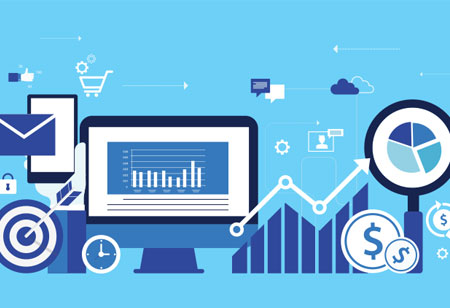THANK YOU FOR SUBSCRIBING
Be first to read the latest tech news, Industry Leader's Insights, and CIO interviews of medium and large enterprises exclusively from CFO Tech Outlook
THANK YOU FOR SUBSCRIBING

By
CFO Tech Outlook | Tuesday, October 20, 2020
Stay ahead of the industry with exclusive feature stories on the top companies, expert insights and the latest news delivered straight to your inbox. Subscribe today.
The competitive edge in business is found in the quantifiable variables of a finely-tuned analytical model.
Fremont, CA: Expertise within the performance drivers at every step of the customer journey is integral to ascending from descriptive analytics, where groups can manually perceive traditional metrics of the organization, to predictive analytics, where these metrics are used to decide or inform destiny outcomes. The competitive aspect in business these days is discovered within the quantifiable variables of a finely-tuned analytical model. Using statistics to understand customer interactions throughout all contact factors inside the business, and the influencers and drivers that affect every, is the domain of Business Analytics (BA), and a keystone instance is the Predictive Revenue Model. [vendor_logo_first]
Business Analytics is the systematic collecting, sorting, processing of business data to benefit new insights, and allows an ever-expanding subject of knowledge and practices driving overall performance.
While early Business Intelligence (BI) used statistical analysis of raw data to explain past overall performance to stakeholders (descriptive), later analytical models blended historical facts with guidelines, algorithms, and additional data to perceive future overall performance (predictive) and the actions favorable to precise consequences (prescriptive).
Data Components and the Predictive Revenue Model
Quantifying and Connecting
Business leadership benefits while data tell the financial story successfully, tying investments to returns. In the past, advertising furnished total marketing spends and YOY revenue growth as a key sign. Now, predictive analytics can provide designated backside-line revenue tied immediately to particular marketing campaigns. The initial funding is to enter on the pinnacle of the anticipated revenue model. The variety of visits from ad to website (Click-via-Rate, or CTR), the number of products added to cart, and the number of finished online purchases (and values) are all captured through tagged factors inside the advert platform. From this alone, fundamental math provides the on the spot transactional go back for the marketing campaign and the acquisition price consistent with the purchaser. More importantly, when those metrics are implemented to calculate the Lifetime Value (LTV) of the client, the genuine return on investment is plain.
By aggregating organization financials and ad platform data, key descriptive analytics insights are revealed (mapping spend to particular returns, common transaction sales, and so on.), in addition to sales-producing predictive analytics insights. The use of core data elements from ubiquitous platforms (EAS, digital ad platform, and, optionally, a CDP/CRM) presents the essential elements required for marketing management to much decorate choice-making.
Learning the power of the present data, the relative simplicity of recent facts factors, and the logical connectivity among them, all offer transparency to drivers of enterprise overall performance and the insights to substantially enhance choice-making at nearly every degree.
See also: Top Trading Solution Companies
I agree We use cookies on this website to enhance your user experience. By clicking any link on this page you are giving your consent for us to set cookies. More info

However, if you would like to share the information in this article, you may use the link below:
www.cfotechoutlookapac.com/news/what-is-predictive-revenue-modeling-nid-1190.html



